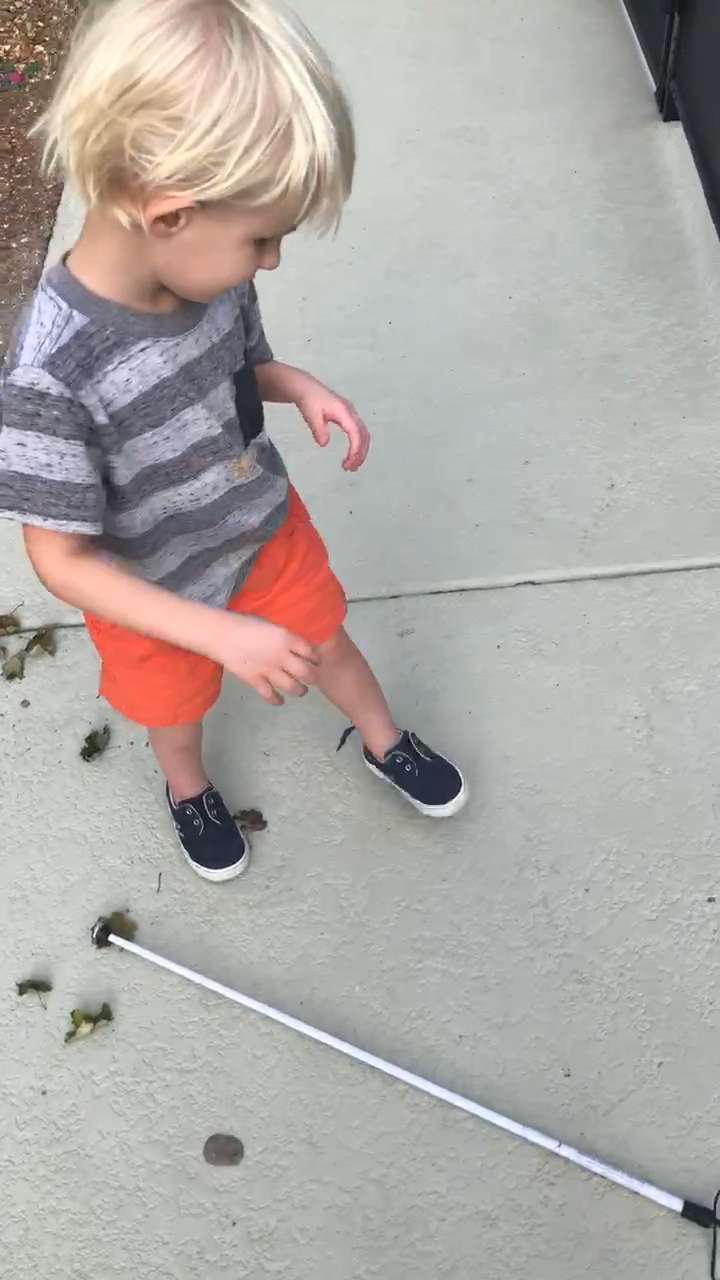Your Blind Child Isn’t being “Bad” — The Cane Is Too Difficult to Swing Each Step
- Grace Ambrose-Zaken

- Nov 4
- 2 min read
If your child is blind and yet resists using the long cane, struggles with posture, or seems to move slowly and cautiously, it’s not a reflection of his attitude or ability — it’s a sign that his mobility device may not be the right fit.
At Safe Toddles, we often hear from parents who worry that their child “just doesn’t like the cane.” But what we find again and again is that the cane isn’t the problem — the design is. Many children with a mobility visual impairment or blindness simply don’t have the motor coordination or arm strength to swing a long cane effectively.
When the cane doesn’t work for the child, the result is frustration, avoidance, and unsafe travel.

Five Signs Your Blind Child’s Mobility Device Isn’t Working
Here are the most common signs that your child’s cane setup needs to be reconsidered:
1. Motor Skill and Posture Concerns
If your child walks with their feet turned outward, has a wide stance, or takes slow, cautious steps, they may be compensating for uncertainty about what’s ahead. The effort to swing the cane while maintaining balance can also lead to awkward posture and fatigue.
2. Low Daily Activity Levels
Experts recommend that children achieve several hours of active movement each day — but blind children who don’t feel confident moving independently often don’t reach these activity goals. A cane that’s difficult to manage can discourage exploration and limit healthy development.
3. Reluctance to Use the Long Cane
If your child only uses their cane when reminded, or seems to forget it altogether, it’s a red flag. This often signals that the cane feels ineffective, not that your child doesn’t understand its purpose.
4. Prefers to Hold a Hand — Even With the Cane
When your child continues to hold your hand or hug walls while using their cane, it’s a clear sign they don’t trust it to keep them safe. A mobility device should increase confidence, not require constant backup.
5. Poor Cane Technique = Poor Protection
If your child still bumps into furniture, misses steps, or falls despite using the cane, the tool isn’t serving its purpose. Without consistent obstacle detection, they’re still at risk of injury and missing the spatial information they need to move safely and efficiently.

The Problem Isn’t Your Child — It’s the Tool
Traditional long canes were designed for adults who already have strong motor control and balance — not for toddlers and young children who are still developing those skills.
That’s why the Pediatric Belt Cane was created. It’s a wearable white cane that stays in constant contact with the ground and always leads the way — offering reliable protection, stability, and environmental awareness without requiring complex cane-swinging movements.
When children use the right tool for their stage of development, they become more active, more confident, and more independent.
💡 The Takeaway
Your child isn’t “stubborn” or “unmotivated” — they’re telling you, in the only way they can, that their mobility tool isn’t meeting their needs.
Let’s give them a cane that fits their body, supports their movement, and keeps them safe — every step of the way.








Comments